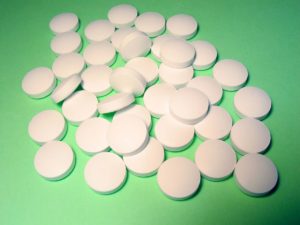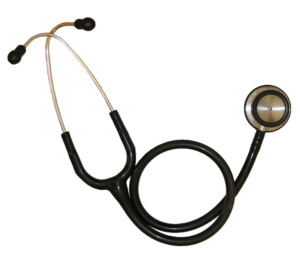I was recently asked my thoughts about a nutritionist recommending Benecol spreads, which I actually had never heard of before. After researching Benecol, I looked with horror at all the non-real food ingredients in the various products (for example, Benecol light spread, with 39% vegetable oil, included partially hydrogenated soybean oil, plant stanol esters, various emulsifiers, potassium sorbate, artificial flavor, etc). I was dismayed because to me it didn't seem like a "real food" - where were the "real" whole food ingredients? For example,consider emulsifiers which recent research says disrupts the "gut microbiome" (the community of microbes living in the gut) and causes inflammation. Which we all know is not good. And partially hydrogenated oils (trans fats) are again a big health no-no. And on and on.
And recently the Academy of Nutrition and Dietetics, an organization that represents some 75,000 registered dietitians and nutritionists, gave its first endorsement (with a "Kids Eat Right" seal of approval) to Kraft American cheese single slices. Huh? Processed cheese (with whey protein concentrate, emulsifiers, sodium citrate, etc.) got an approval seal and not real cheese? What is going on? The answer may lie with the fact that many nutritionists are accepting cash for endorsing certain foods, especially those promoted by big business companies. The latest to be endorsed are cans of Coca Cola soda! From the Tampa Bay Times:
Coca-Cola paid nutritionists to tout Coke as heart healthy snack
If a column in honor of heart health suggests a can of Coke as a snack, you might want to read the fine print.The world's biggest beverage maker, which struggles with declining soda consumption in the U.S., is working with fitness and nutrition experts who suggest its cola as a healthy treat. In February, for instance, several wrote online pieces for American Heart Month, with each including a mini-can of Coke or small soda as a snack idea.
The mentions — which appeared on nutrition blogs and other sites including those of major newspapers — show the many ways food companies work behind the scenes to cast their products in a positive light, often with the help of third parties who are seen as trusted authorities.
Ben Sheidler, a Coca-Cola spokesman, compared the February posts to product placement deals a company might have with TV shows. "We have a network of dietitians we work with," said Sheidler, who declined to say how much the company pays experts. "Every big brand works with bloggers or has paid talent."
Other companies including Kellogg and General Mills have used strategies like providing continuing education classes for dietitians, funding studies that burnish the nutritional images of their products and offering newsletters for health experts. PepsiCo Inc. has also worked with dietitians who suggest its Frito-Lay and Tostito chips in local TV segments on healthy eating. Others use nutrition experts in sponsored content; the American Pistachio Growers has quoted a dietitian for the New England Patriots in a piece on healthy snacks and recipes and Nestle has quoted its own executive in a post about infant nutrition."
Most of the pieces suggesting mini-Cokes say in the bios that the author is a "consultant" for food companies, including Coca-Cola. Some add that the ideas expressed are their own. One column is marked at the bottom as a "sponsored article," which is an ad designed to look like a regular story. It ran on more than 1,000 sites, including those of major news outlets around the country. The other posts were not marked as sponsored content, but follow a similar format.
Kelly McBride, who teaches media ethics at The Poynter Institute, which owns the Tampa Bay Times, said the phrasing of the disclosure that the author is a "consultant" for food companies, including Coca-Cola, doesn't make it clear the author was specifically paid by Coke for the column."This is an example of opaque sponsored content," McBride said.
The Academy of Nutrition and Dietetics, a professional group for dietitians, says in its code of ethics that practitioners promote and endorse products "only in a manner that is not false and misleading." A spokesman for the academy did not respond when asked if the posts on mini-Cokes meet those guidelines. Meanwhile, a group called Dietitians for Professional Integrity has called for sharper lines to be drawn between dietitians and companies. Andy Bellatti, one of its founders, said companies court dietitians because they help validate corporate messages.
 Macular degeneration is a feared condition, so this study finding a link with calcium supplements and age-related macular degeneration in those 68 and older is a bit alarming. However, it shows association, not causation, because it looked at people only one time. But once again supplements are looking suspect.
Macular degeneration is a feared condition, so this study finding a link with calcium supplements and age-related macular degeneration in those 68 and older is a bit alarming. However, it shows association, not causation, because it looked at people only one time. But once again supplements are looking suspect.
 People have asked me if it is healthy to exercise or ride a bicycle in the congested and polluted New York metro area. According to this much quoted in the past week study from the University of Copenhagen - it is better to exercise than not in polluted cities when looking at death rates. But is their air pollution even comparable to ours? What does it do to our lungs to bicycle daily behind smoke belching buses?
People have asked me if it is healthy to exercise or ride a bicycle in the congested and polluted New York metro area. According to this much quoted in the past week study from the University of Copenhagen - it is better to exercise than not in polluted cities when looking at death rates. But is their air pollution even comparable to ours? What does it do to our lungs to bicycle daily behind smoke belching buses? For years there has been discussion about curcumin's anti-inflammatory, anti-bacterial, and anti-cancer effects, but more research is needed (some trials are going on now). Curcumin is a chemical compound found in turmeric. Turmeric is a member of the ginger family. It is used as a spice and is a common ingredient in Indian cooking, but also used in Middle Eastern and South Asian recipes.From Medical Xpress;
For years there has been discussion about curcumin's anti-inflammatory, anti-bacterial, and anti-cancer effects, but more research is needed (some trials are going on now). Curcumin is a chemical compound found in turmeric. Turmeric is a member of the ginger family. It is used as a spice and is a common ingredient in Indian cooking, but also used in Middle Eastern and South Asian recipes.From Medical Xpress; A lengthy review of
A lengthy review of